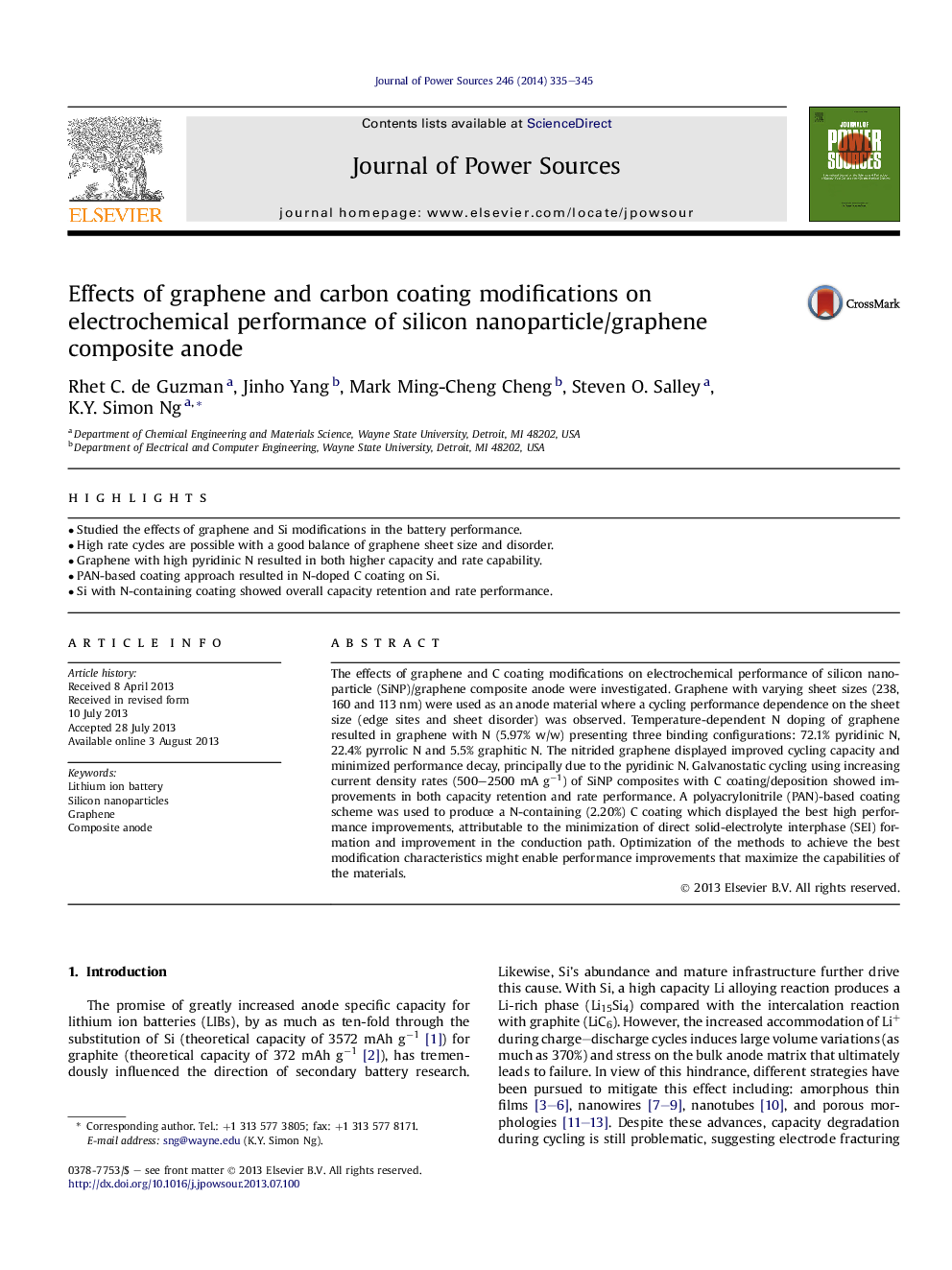| کد مقاله | کد نشریه | سال انتشار | مقاله انگلیسی | نسخه تمام متن |
|---|---|---|---|---|
| 1284303 | 1497986 | 2014 | 11 صفحه PDF | دانلود رایگان |
• Studied the effects of graphene and Si modifications in the battery performance.
• High rate cycles are possible with a good balance of graphene sheet size and disorder.
• Graphene with high pyridinic N resulted in both higher capacity and rate capability.
• PAN-based coating approach resulted in N-doped C coating on Si.
• Si with N-containing coating showed overall capacity retention and rate performance.
The effects of graphene and C coating modifications on electrochemical performance of silicon nanoparticle (SiNP)/graphene composite anode were investigated. Graphene with varying sheet sizes (238, 160 and 113 nm) were used as an anode material where a cycling performance dependence on the sheet size (edge sites and sheet disorder) was observed. Temperature-dependent N doping of graphene resulted in graphene with N (5.97% w/w) presenting three binding configurations: 72.1% pyridinic N, 22.4% pyrrolic N and 5.5% graphitic N. The nitrided graphene displayed improved cycling capacity and minimized performance decay, principally due to the pyridinic N. Galvanostatic cycling using increasing current density rates (500–2500 mA g−1) of SiNP composites with C coating/deposition showed improvements in both capacity retention and rate performance. A polyacrylonitrile (PAN)-based coating scheme was used to produce a N-containing (2.20%) C coating which displayed the best high performance improvements, attributable to the minimization of direct solid-electrolyte interphase (SEI) formation and improvement in the conduction path. Optimization of the methods to achieve the best modification characteristics might enable performance improvements that maximize the capabilities of the materials.
Journal: Journal of Power Sources - Volume 246, 15 January 2014, Pages 335–345
